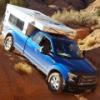A panel's Pmax rating is based on a lab 'standard' for what may be considered normal operating conditions, which is essentially a non real-world condition. Under the right orientation, tilt, irradiance and temperature conditions a panel's real-world Pmax could exceed it's listed rating. So, is it normal for two 160W solar panels to top 350 Watts? Possibly, if you are sitting in the optimal solar sweet spot. But you wouldn't see those conditions on a regular basis year round unless you were, say, at the Equator and never saw a cloud in the sky and parked in a totally unobstructed site with the panel's cells lined up perfectly for maximum output. And that's why Pmax and other ratings are provided with typical, optimal-average operating conditions in mind, as opposed to atypical, theoretical best case lab scenarios.
...Is it normal for two 160 watt panels (series) two get Pmax of more than 350 W?
Also, in the case of Battle Born LiFePOs, the company techs suggest that your battery should receive an adequate charge on a regular basis. It doesn't need to be seeing 14.4-14.6 V every day, but they do suggest reaching that level at least once a week or so, unless the battery is in long-term storage. And of course you wouldn't stay at 14.6 V in absorption for long if your batteries were topped up all the time. You might find that you would only stay at that level for one minute if you already had a high SOC (90-100%), before the voltage began to taper off down to 13.6 V or 13.2 in its resting state, I have a floating set point of 13.5, but after the battery leaves absorption and enters float it will tend to hover at around 14.2, more or less, until the end of the charging cycle, when the sun goes down. I'm using a Victron 100/30 mppt controller and those are real numbers in my setup. Solar charging conditions are pretty fluid, with lots of fluctuations in voltage, which is actually pretty healthy for a battery. I'd rather be charging my battery using solar vs. plugged into an AC charger and constantly hovering in float mode. I've got two 160 W panels and use the BB recommendations for bulk, absorbtion and float set points. Those set points are not destroying my battery performance. They actually work pretty well. This may be an overly simplistic way to think about it, but it's like eat when you can (or top it off when you can in the case of solar) - you never know when it might be your last meal for a while.
Rich
Edited by ri-f, 18 February 2021 - 05:09 PM.
















